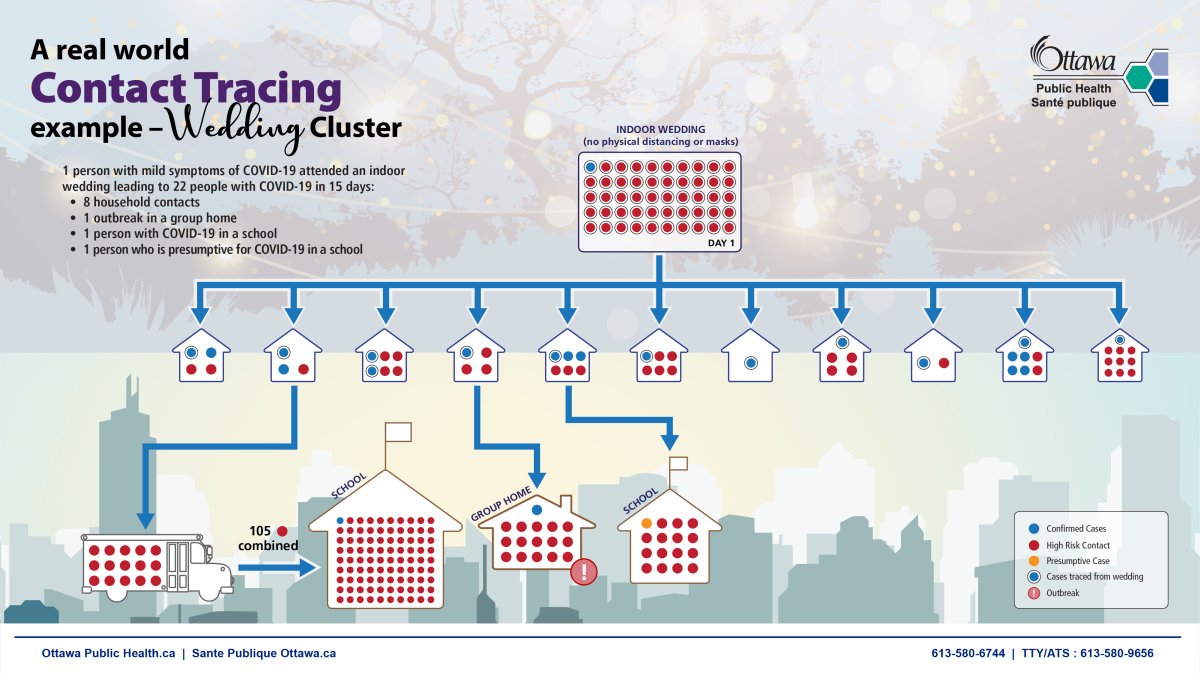One person who showed up at an indoor wedding in Ottawa with mild COVID-19 symptoms kicked off a chain reaction of transmission that saw 22 people infected and more than 200 people forced to self-isolate in just 15 days, according to the local public health unit.

Ottawa Public Health (OPH) shared a diagram on Twitter on Thursday morning to illustrate how quickly the novel coronavirus can spread in large group settings when precautions aren’t taken.
At a September indoor wedding with roughly 50 people in attendance, one person attended the event despite having mild symptoms of COVID-19, OPH said.

Attendees were not physically distancing or wearing masks at the event, so when those symptoms were later confirmed to be COVID-19, 49 other high-risk contacts were created.
In total, 22 people tested positive for the virus in connection with the event.
Before those cases could be confirmed, however, those high-risk contacts also returned to their own homes to expose others in their household.
Even more worryingly, those contacts also passed on the risk to their school bus cohorts, schools and group homes.
OPH said one group home ended up in an outbreak in connection with the wedding exposure, while one school had a confirmed case of the virus and another saw a presumptive case.
- ‘Super lice’ are becoming more resistant to chemical shampoos. What to use instead
- Solar eclipse eye damage: More than 160 cases reported in Ontario, Quebec
- Invasive strep: ‘Don’t wait’ to seek care, N.S. woman warns on long road to recovery
- Canadian man dies during Texas Ironman event. His widow wants answers as to why
That prompted mass testing demands for the affected individuals’ classmates or fellow residents in congregate living.
In total, 207 people had to self-isolate as a result of the wedding exposure.
“Kids missed school, their parents couldn’t work & testing lines were longer. Our. Actions. Matter,” OPH said on Twitter.
OPH has shared previous examples of transmission after large events, including friends meeting up at a cottage and a group of people attending an outdoor barbecue.
In each of the cases, OPH used the case study as a reminder of how quickly the virus can spread when people aren’t physically distancing, wearing masks or staying home when sick.
Dr. Vera Etches, Ottawa’s medical officer of health, said last week that residents need to do more to reduce their close contacts so the city’s health-care system does not become overwhelmed.






Comments